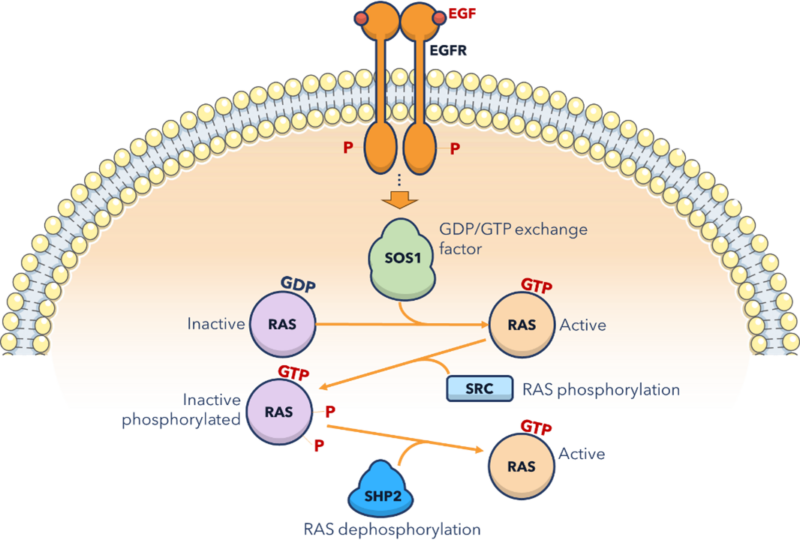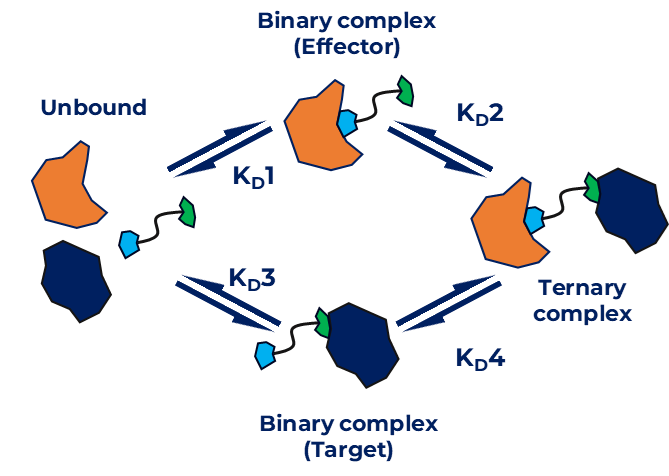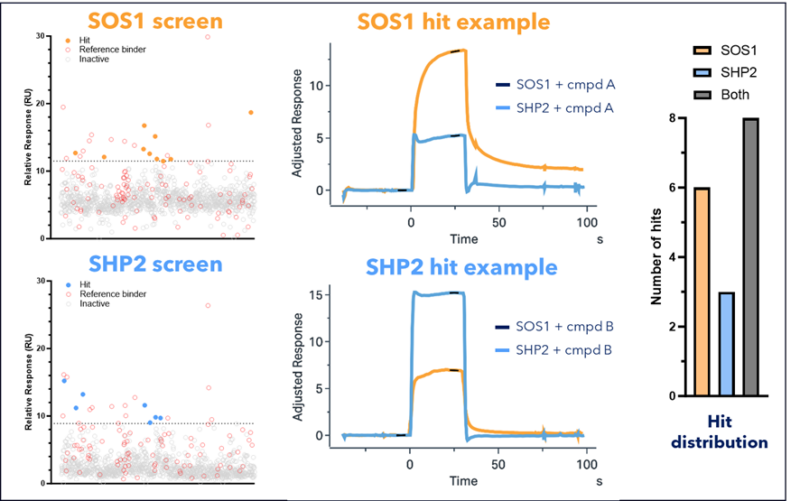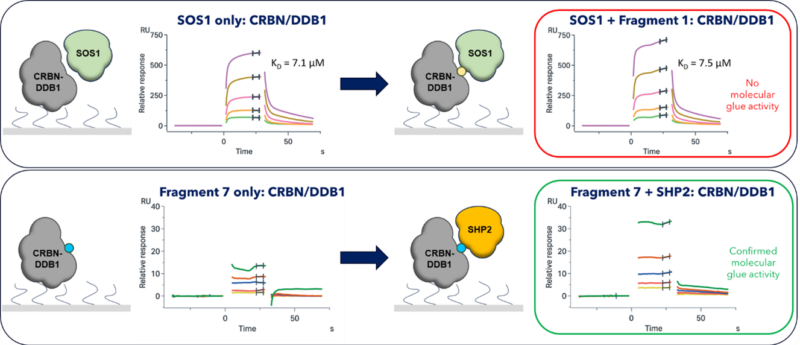How do you find novel molecular glues? A biophysical approach to molecular glue hit ID
Well-characterized hits provide a strong foundation for experienced drug discovery teams to rapidly advance a compound to the candidate stage. In our #StrongFoundations series, the Sygnature Discovery team takes you through three successful hit ID case studies which demonstrate how to get the best start points for your projects. Search the hashtag on LinkedIn so you don’t miss all the insights.
Challenge
The discovery of therapeutic molecules with molecular glue properties has historically been by serendipity, rather than design, and in more recent years has focussed very heavily on known glue-like starting points, such as the imid molecules for Cereblon, which has left the patent space very crowded and difficult to work in. So, how do you discover something truly novel?
Approach
Here, we outline our approach to utilise unbiased Surface Plasmon Resonance (SPR) screening of fragment and lead like libraries against two targets, SOS1 and SHP2, to generate novel hits for further development. We believe this approach has both the throughput and the sensitivity to identify these difficult to find molecules, setting it apart from more traditional plate-based screening. We also explore the difference between fragment and lead-like libraries in our HIT SYNERGY platform in this setting and demonstrate why a combined library approach may have advantages over a single library focus.
Target and Assay Selection
The targets chosen for this study were two proteins involved in the regulation of RAS and have been shown to be suitable targets for degradation. They are therapeutically relevant and interesting targets in an oncology setting, which should be good tools for development of a discovery platform focused on targeted protein degradation.

Figure 1 Adapted from Buday, L., et al. Cancer Metastasis Rev 39, 1067–1073 (2020). An overview of the Ras oncogenic pathway, including the roles of the targets of interest, SOS1 and SHP2.
Once the targets were chosen, we performed some initial work to ensure that they were compatible with our in-house developed CRBN/DDB1 assay platforms, including our SPR platform. This assay platform utilises our high-quality, in-house generated human cereblon-DDB1 complex, which has been shown to be stable and compatible with a wide variety of assay formats.

Figure 2 Outline of bifunctional ternary complex formation, highlighting equilibria between binding states.
Figure 3 Example data from a tool bifunctional degrader, demonstrating that both binary and ternary complexes can be formed and characterised on the SPR senor chip. This data also allows us to calculate the cooperativity of the ternary complex by comparing KD1 and KD4.
Using this platform, we ran a ternary complex screen on Sygnature’s fragment library against SOS1 and SHP2, as well as a 10k lead-like diversity set against SOS1.
The rationale behind this being that lead-like compounds from our HTS library are likely to be more potent and able to form stronger ternary complexes, but the hit rate may be low, whereas the fragment library may be more able to generate hits but will do so at a significantly lower potency range. This assay screen was performed using Biacore 8K+ instruments from Cytiva.
Both of these screens generated hits that appeared to induce ternary complex formation, but it was the fragment screen in particular that demonstrated the best quality hits, and potentially provided the better starting points for further development and discovery.

Figure 4 Example data from the SOS1 and SHP2 molecular glue fragment screen, demonstrating a plot of all binding data, in addition to representative examples of positive glue hits. The total number of selective and non-selective hits is shown in the histogram on the right.
These hit fragments were then tested using more in-depth assays to determine whether there was any true molecular glue activity or not. In this case, some of the SHP2 hits appeared to show clear activity to enhance the formation of a ternary complex in a dose dependent manner.

Figure 5 Initial validation of the hits demonstrated that at least one molecular glue-like molecule had been identified for SHP2, whilst other hits, such as this example for SOS1, demonstrated little or no molecular glue activity.
Conclusion: SPR Can Be Utilised Successfully to Find Novel Molecular Glues
There are potentially many routes into identifying novel molecular glues, but it is widely known that this is a challenging area of discovery, where many more traditional assay formats fail.
By applying our expertise in SPR and TPD, we have shown that identifying new starting points is possible using this approach, and we look forward to developing these hits further.
This work highlights many components of the HIT SYNERGY platform at Sygnature, which have been focussed onto complex area of hit identification:
- Technological capacity: We are able to select SPR from a wide range of assay technologies available to the platform as we believe it offers higher sensitivity and an ability to identify poorly behaved hits in this setting
- High Quality Libraries: We have curated two different libraries, with different molecular properties and design principles, designed to improve our ability to find novel hits against challenging targets
- Expertise in protein science and protein degradation: Our established teams at Sygnature were fundamental in being able to develop the cereblon platform and enable its use in large biophysical screens
A Synergistic Library Approach was key to identifying Novel Hits.
Find out more about Sygnature Discovery’s powerful hit ID platform, HIT SYNERGY, which integrates multiple advanced screening technologies to rapidly generate high-quality, structurally diverse hits, tailored to today’s most challenging new target classes. Well-characterized hits provide a strong foundation for our experienced drug discovery teams to rapidly advance your compound to the candidate stage.
